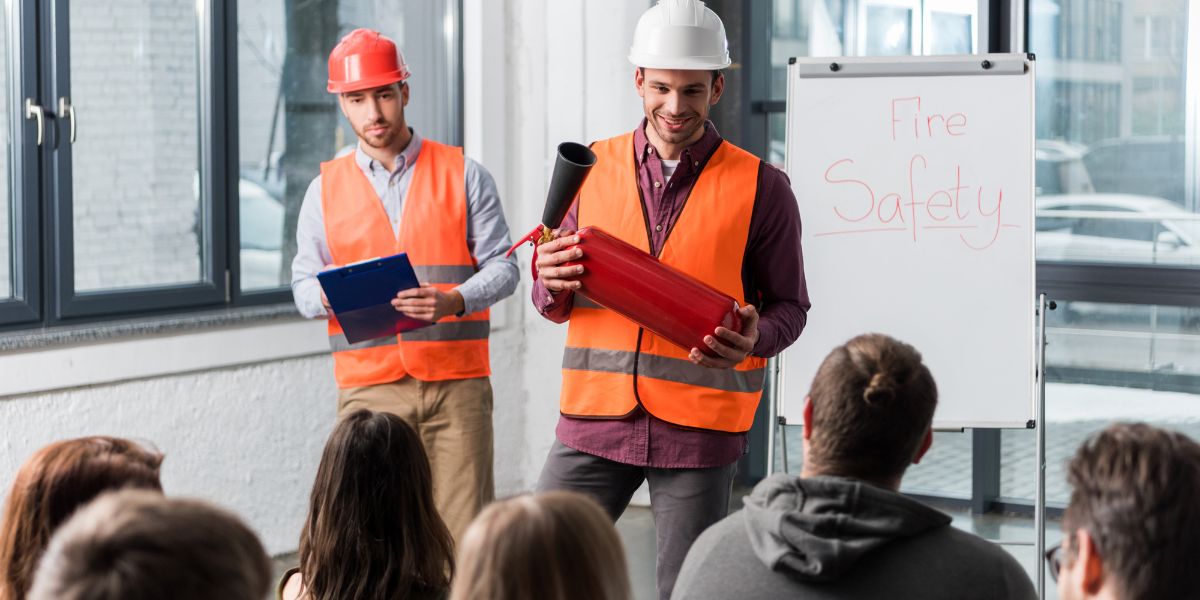Fire safety is something that’s crucial no matter what you’re doing. It could literally be the difference between life and death.
Employees need to be aware of fire safety regulations in order to protect themselves and their co-workers. The following tips will help employees learn about fire safety and how to stay safe in the event of a fire. Employees should also take advantage of fire safety training offered by their employer.
Do employers have to provide fire safety training?
When a workplace does its parts to reduce the possibility of fires, it will be required to meet the minimum standard the Occupational Safety and Health Administration (OSHA) sets for keepings themselves safe. Employers will be expected to have their employees trained to ensure that their employees can spot signs of a fire and react appropriately in the event of a fire.
But comprehensive workplace fire safety training is
- Characterized by much more than identifying fire hazards.
- Workplace fire safety training includes developing techniques in response to hazards.
- Preventing fire is a big part of fire safety training for employees.
It’s widely thought that certain industries are exempt from training requirements on fire prevention. Fire can, and does, take place in nearly all industries, including Healthcare facilities, Restaurants and bars Educational institutions Office buildings Retail spaces Industrial-use buildings and warehouses.
Fire safety best practices are, and are, required in all relevant industries, including:
- Medical offices,
- Restaurants, bars,
- Educational establishments,
- Offices,
- Retail spaces
- Industrial-use buildings, and
- Warehouses.
The most common causes of candle-related fires are in homes Ovens and stoves Lighting and electrical equipment Drowning.
Arson is the most common cause of commercial fires. Cooking equipment and kitchens are most often involved. Heating, lighting, and electrical equipment are the other most common causes. Smoking is the main cause in residential fires.
What fire safety training topics do I need to include?
Fire safety training topics generally begin with an overview of the practices and gradually zoom in from there according to the industry. These topics may include the following.
What to do in case of a fire
Every employer is urged to develop a fire-safety plan, and all employees must know what to do if a fire breaks out. Employees should be aware of the emergency plan and which employees are accountable for upholding it. Also, the basic fire safety training should include:
- What doors to secure as individuals are exiting the building,
- Where to meet after evacuation, and
- What to do if they encounter heat or smoke that prohibit evacuation are all things to think about once evacuating the building.
Employees should also be able to operate the fire alarm and sprinkler system in their workplace if possible.
How to use a fire extinguisher
Teaches how to correctly use the fire extinguisher in the workplace advanced fire suppression program.

Type and cause of fires and how to contain them
Employees taking part in certain scenarios might benefit from additional technical training. Examples of these situations include healthcare staff who care for injured patients, staff on remote locations with no emergency services (including boats or oil platforms), and employees on industrial sites with volatile chemicals.
In these instances, up to the fire training may need to be more comprehensive, including identifying the type and cause of the incident, and how it can be contained. It can also include training on fire personal protective equipment (PPE) for fire-related emergencies.
It’s crucial that we emphasize to employees the necessity for workplace safety. Not all employees will receive thorough training, and even if they do, what ensues may not always be the ideal plan of action. Workplace fire safety training helps employees determine what action they can take in the event of a fire.
Fire prevention
Fire prevention channels resources for use in a more complete fire training. This may include training employees of how to spot fire hazards, how to prevent risky situations, and how to address fire risks.
In summary, Fire and safety training is essential for the safety of businesses and employees. Employees should have regular fire and safety training, and companies should encourage fire and safety training. Fire safety training can help companies meet legal requirements and be a safer workplace.

